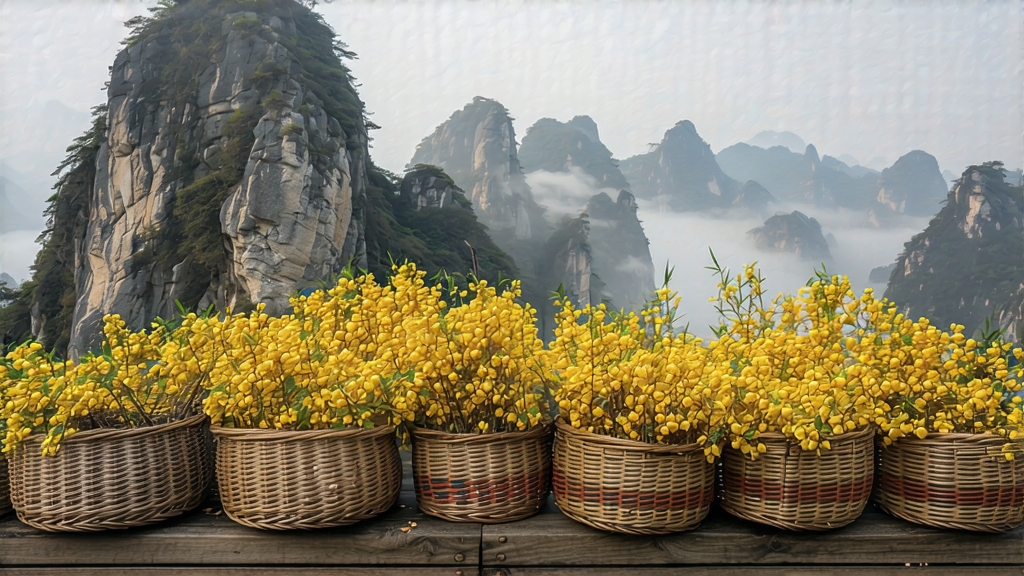
Tucked high in the mist-veiled Dabie Mountains of western Anhui Province, Huoshan Huangya has quietly captivated Chinese emperors, poets, and tea sages for more than seven centuries. Unlike the better-known green teas that surround it geographically, this “yellow bud” tea undergoes a secretive, slow-motion oxidation called menhuang—literally “sealed yellowing”—that turns the leaves a lustrous straw-gold and softens their edges into a mellow, orchid-sweet liquor. To international drinkers who think they know Chinese tea, Huoshan Huangya is the elegant stranger: neither green nor oolong, but a genre of its own, suspended between freshness and maturity, clarity and complexity.
Historical whispers place the tea’s birth during the Ming dynasty, when a Huoshan magistrate presented a pouch of early-spring buds to the Hongwu Emperor. The imperial court was so taken by the tea’s bright yellow leaf and honeyed aroma that it was decreed an annual tribute, carried 1,200 km by horseback and canal boat to Beijing within ten days of plucking. By the Qing, the tea had earned the moniker “liquid gold of the Yangtze” and was bartered for Mongolian horses along the inland tea roads. Production techniques were guarded by three hereditary families in the village of Foziling; outsiders caught spying on the withering rooms were reportedly dunked in the nearby Huoshan reservoir. When China’s tea export boom turned toward fully oxidized black teas in the late nineteenth century, Huoshan Huangya retreated into domestic obscurity, surviving only as a scholar’s curiosity until the 1970s, when Anhui agronomists revived the cultivar from a single 300-year-old mother bush.
Today the tea is harvested from a narrow 30-km micro-valley between 300 m and 800 m elevation. The clone-grown gardens sit on weathered granite soils streaked with quartz; cool nights and a 15 °C diurnal swing slow bud growth, concentrating amino acids. Only the standard “one bud with one unfolding leaf” is plucked during a frantic twenty-day window that starts when local mountain sparrows begin nesting and ends just before the Qingming festival. Pickers work in pairs, one climbing the camellia tree while the other steadies a bamboo basket lined with fresh banana leaves to prevent bruising. By 9 a.m. the leaf is already in the village workshop, spread no thicker than two fingers on bamboo trays set 1.5 m above smolder charcoal pits. The goal is not to dry but to coax the leaf into a gentle stupor, reducing moisture from 78 % to 62 % in ninety minutes while activating endogenous enzymes that will later drive the yellowing.
The hallmark menhuang step begins the following dawn. Three kilograms of semi-wilted leaf are piled into a shallow cedar box, covered with steamed cotton cloth, and slid into a cave-like room kept at 28 °C and 85 % humidity. For the next four to six hours the tea master checks the pile every twenty minutes, sniffing for the moment when grassy notes give way to steamed pumpkin and fresh straw. When the leaf temperature reaches 33 °C the pile is broken up, aerated for five minutes, then re-covered; this cycle repeats three times. Oxidation here is not the violent browning of black tea but a restrained, enzymatic caramelization that tints the leaf margin a warm maize while preserving the vein’s jade heart. The process is stopped by a 90-second “flash roast” on a 160 °C bamboo drum, hot enough to denature enzymes yet brief enough to lock in 7 % residual moisture. A final low-temperature bake over charcoal embers lasts forty minutes, during which the master fans the leaf with goose-feather paddles to infuse a whisper of smoke that evaporates within days, leaving only a toasty echo.
Finished Huoshan Huangya appears slim and uniform: 15 mm buds tipped with microscopic hairs that catch light like powdered gold. The liquor steeps to a pale chardonnay with a shimmering surface meniscus; aroma oscillates between fresh lychee, steamed edamame, and a fleeting note of crème brûlée. On the palate it is almost weightless for the first second, then expands into a glycerol roundness reminiscent of white peaches and mineral water from wet stones. The swallow leaves a cool, anise-tinged aftertaste that can linger ten